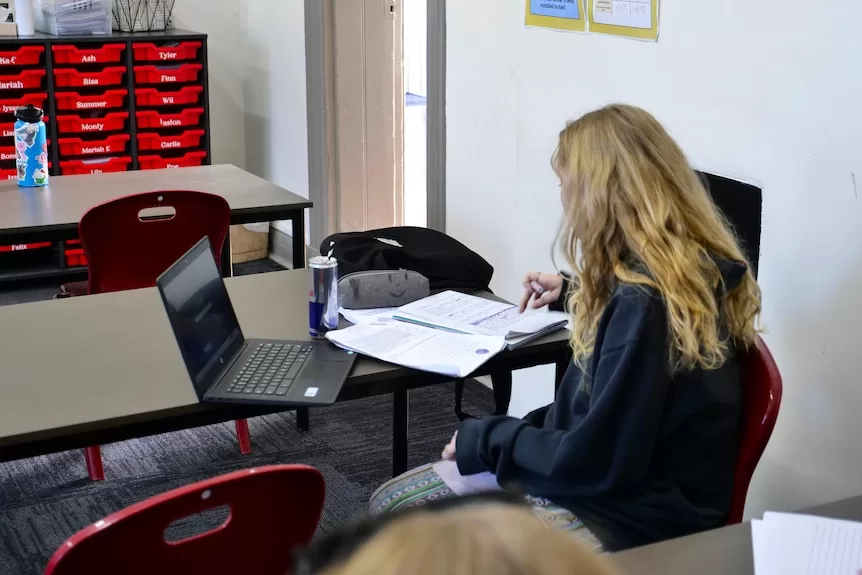When Emily Large thinks about her time at high school, she can be quite emotional.
“When I was in mainstream schools, I had under six per cent attendance,” she said.
“I had depression and anxiety and my school didn’t care about what I was going through.
“They just wanted my attendance back up.”
Loading…
Attendance, or lack of it, can often be an issue for young people with high-level social and emotional needs like autism, mental-health issues or those who face bullying.
A recent Four Corners report found 38 per cent of all students across years 1 to 10 were absent for more than 20 days in 2023, which is considered “chronically absent”,
As school refusal rates rise, some parents and students are turning to alternative independent schools.
For Emily, Alesco Secondary College, in the Hunter region of New South Wales, was the alternative she found to mainstream schooling.
What does an alternative school look like?
Alesco is classed as an independent special assistance school, where students who have fallen out of mainstream education are offered tailored and flexible education between years 9 and 12.
Students study a compressed HSC schedule and can choose ATAR and non-ATAR credited subjects.
They study six subjects across two years and sit exams at the end of each year.
There is also a “Year 13” option, where students can do extra studies or vocational training.
The class sizes are smaller than in mainstream schooling, there are flexible attendance plans to accommodate students’ needs, and no school uniforms.
Alesco began in Newcastle in 2002 with 35 students; 22 years later it has expanded to cater to more than 630 students across six campuses in the Hunter region, and one in Forster on the Mid North Coast.
“When we started Alesco, we were trying to answer a really local problem,” co-founder Rowan Cox said.
“But I think we hadn’t realised that we had tapped into a local problem in most locations.”
Flexible learning still evolving
Over the past decade the number of special assistance schools across the country has doubled to almost 100.
According to Independent Schools Australia, there was a 364 per cent rise in enrolments in independent special assistance schools between 2014 and 2023.
Flinders University research associate Nigel Howard has been studying trends in school refusal, with an interest in special assistance schools.
His research shows that graduates from a flexible model of schooling can struggle to get the same recognition as students who get similar results in their HSC at a mainstream school.
“We need accreditation authorities to see that this model of learning and teaching is very different from the industrial model in a mainstream school,” he said.
“We also need to understand how special assistance schools connect their learning, and how they make it more than just responding to the individual needs of that student.
“Otherwise we’re just finding another place for these young people to feel good and safe for a short amount of time, but then not being able to translate that into work and community life.”
Mr Howard wants to see more research into how these schools work.
“What needs to underpin that is an actual understanding of how many students are there, what they’re doing and what their outcomes are,” he said.
“We’re kind of working blind in that, because we don’t have that research at the moment.”
Changing the way students think about school
When Emily Large graduated from Alesco in 2022, she received the student of the year award.
She had come a long way from when she first walked through the school gates in year 9.
“I went there with six per cent attendance, and I graduated with 98 per cent,” she said.
“I realised that what I do with my life matters.”
For Emily, flexible learning helped change the way she saw school.
“If you can’t learn the way they’re teaching it, the teachers figure out a way that works for you,” she said.
“There’s not 30 students in one class, so they can take extra time to help you.”
